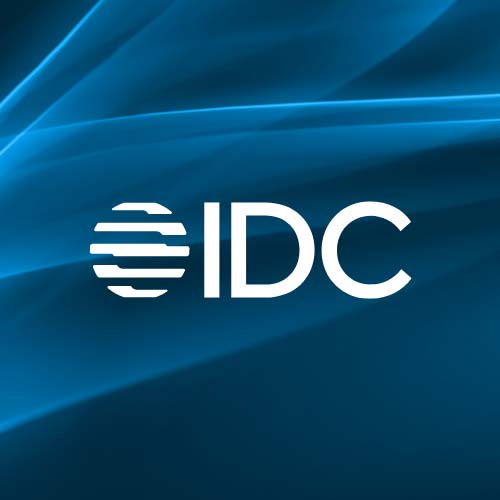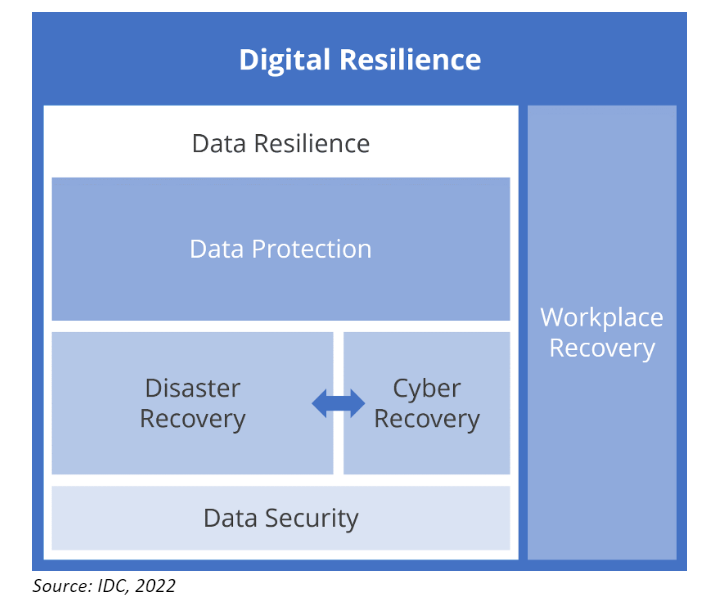IDC defines digital resilience as a business’s ability to successfully operate following an outage or breach. As such, data resilience is the main component of digital resilience and includes disaster recovery and cyber recovery with support from data protection and data security. All functions must be interoperable and each has an essential role to play in keeping a business online and resistant to threats like ransomware.
In a December 2021 survey, IDC found fewer than one-third of organizations that fell victim to ransomware were able to fully recover without paying the ransom. This is why many organizations are seeking solutions that assure data survival with rapid recovery in the event of an attack.
Benefits of data resilience
A major challenge to data resilience is data sprawl and silos. Having disparate, difficult-to-manage data increases the risk of loss due to gaps in protection. These silos often require separate data protection products, leading to redundant purchases, inefficient operations, inconsistencies in compliance, and costly maintenance.
Consolidating data protection solutions and operations across the enterprise simplifies protection and improves data resilience. A strong, unified resilience platform reduces the risks of data loss and improves recovery times, as well as increases management efficiencies and cost savings for IT departments.
Considerations
IDC predicts that by 2025, 55% of organizations will have migrated their data protection systems to a cloud-based model to simplify management and protection. Leveraging the elasticity and efficiency of the cloud enhances data resilience by unifying data protection, providing customers with unlimited resources, and enabling additional layers of protection, including “air-gapped” capabilities.
IDC recommends that organizations determine parameters for assessing their resilience and recovery capabilities. Two key indicators of a strong response are recovery point objective (RPO) and recovery time objective (RTO). Visit Druva’s RPO and RTO pages for an in-depth look at how to calculate each for your team’s specific needs.
Trends
In 70% of cases, IDC found that new digital transformation projects involved shifting an organization’s key infrastructure to the cloud. Further, nearly half of these projects included making improvements to data resilience. To do that, most organizations begin with enhancements to data protection and emphasize improving and accelerating recovery practices.
Key takeaways and next steps
IDC’s findings reflect a new reality — companies need to move past simple data protection to reach true resiliency, and leveraging the cloud is the best path to prepare for unexpected, yet inevitable cyber threats.
Druva is leading the way — providing the industry’s first and only Data Resiliency Cloud to negate the effects of user errors, application corruption, system failure, or external attacks. Druva’s 100% SaaS platform is effective, efficient, and easy to manage, delivering customers peace of mind with truly immutable backups, automatic compliance monitoring, and feature updates to keep applications on the cutting-edge of data protection — all while reducing TCO up to 50 percent!
Read the full IDC report to get the details on today’s data resilience best practices.
…and learn more about what Druva can do for your business. Schedule a free live demo, or request a free trial to see what the Data Resiliency Cloud can do for your organization.

